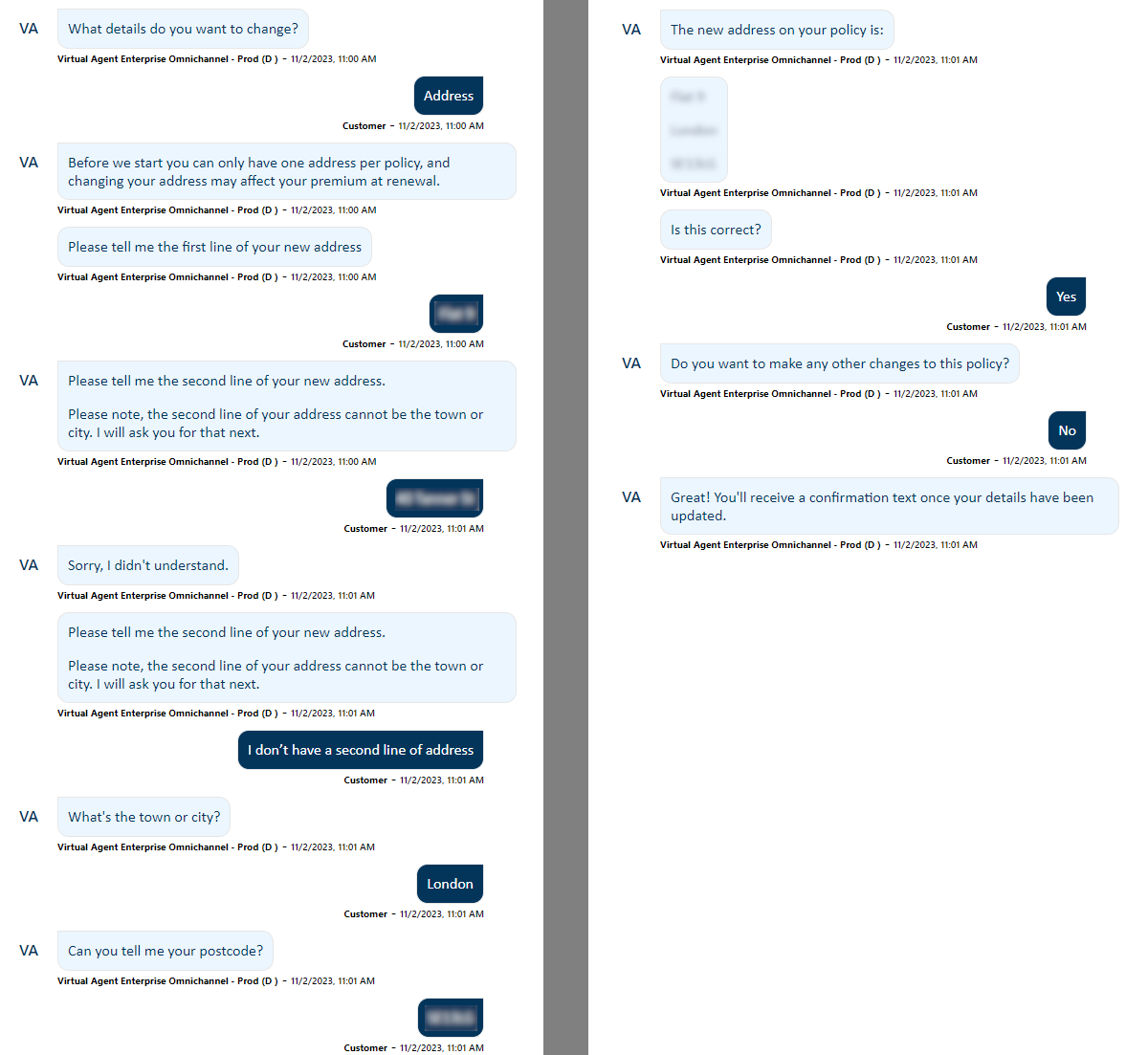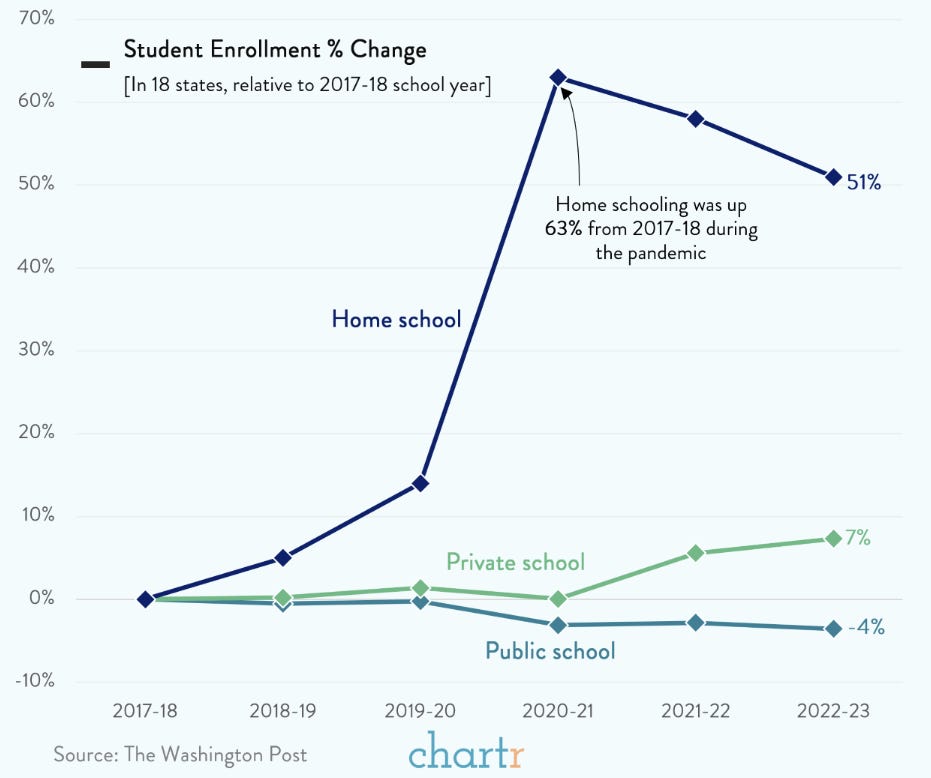The usual collection of things which caught my attention in the last week (or so). Slightly shorter because we’re in Barcelona for a long weekend.
Product Delivery
Related (perhaps very tenuously) to getting the right things done.
Vertical, horizontal, and ghost markets, obviously somewhat Halloween inspired but still a good piece. It’s standard business strategy to think of markets/products as verticals and horizontals and for companies to align/build/sell on this basis. Think vertical companies who try to do everything for customers in a particular industry (every B2B SaaS ever) and horizontal companies who try to provide a commodity service across all industries (cloud service providers). The problem comes at the extremes when someone looks at an entire vertical or an entire horizontal as the TAM, builds a business on that basis and then goes bust because they are too broad. The vertical ones are obvious enough (again every B2B SaaS) but the horizontal ones are where companies definitionally go the biggest and fail (or succeed!) the hardest. When going horizontal it is often unclear who the customer is because you are de facto defining the customer as literally everyone. Without knowing who the customer is it’s then impossible to define the right features and market/sell them to actual customers. To pick a silly example if Birkenstock said that their TAM was all people with feet - then they wouldn’t know what shoes to actually make or who to sell them to.
Disclosure: long AMZN & MSFT (two incredible horizontal players).
Attenuating Innovation (AI), the best write-up I’ve seen on Biden’s executive order to regulate AI. On how illustrative it is that the loudest advocates are the most advanced incumbents:
It sure is notable that the early AI winners seem the most invested in generating alarm in Washington, D.C. about AI. This despite the fact that their concern is apparently not sufficiently high to, you know, stop their work. No, they are the responsible ones, the ones who care enough to call for regulation; all the better if concerns about imagined harms kneecap inevitable competitors.
And on the government itself:
The government is Bill Gates, imagining what might be possible, when it ought to be Steve Jobs, humble enough to know it cannot predict the future…. this Executive Order is a lot like Gates’ approach to mobile: rooted in the past, yet arrogant about an unknowable future; proscriptive instead of adaptive; and, worst of all, trivially influenced by motivated reasoning best understood as some of the most cynical attempts at regulatory capture the tech industry has ever seen.
Disclosure: long AMZN and MSFT (can’t beat ‘em join ‘em?)
Medicine's Endgame, fascinating write-up on leading edge medical innovation. As always in the medtech/biotech world I’m struck by two thoughts (1) the challenge for an outsider to differentiate between something which sounds great and something which actually is and (2) the immense regulatory and logistical challenges of the industry. Of course these compound into massive moats for the large incumbents who can discern the snake oil from the worthwhile, can navigate the regulatory environment and have the capital to invest in scaling processes up.
Disclosure long BAYN, MRNA - and still (bag)holding AMRSQ waiting to loss-harvest my worst stock pick ever.
Spirit Halloween business, not living in the US means I don’t truly understand Halloween - or Spirit Halloween a company which generates a years worth of revenues in just 2 months by opening over 1,400 retail stores and selling a lot of Halloween decorations/costumes. Of course the real magic to the model is the other ten months of the year when they are busy securing locations, sourcing inventory and setting up the processes and systems which allow them to onboard thousands of staff and operate at a frenetic pace for the two months of trading.
All investing is the same, differentiating between ‘real money’ and ‘fast money’ investing can be useful but there is less difference than people think:
One set of investors is mostly focused on making a prediction, and the other on predicting someone else's prediction, but both of these methods require the practitioner to figure out true, important, and misunderstood things about the state of the world.
Also has a great nightclub analogy.
Handling a Regional Outage, an interesting comparison of differences between how the three hyperscale cloud providers manage major outages. GCP featured highly questionable architectural choices, AWS was the fastest to resolve (5 min!) but the least transparent after the fact and Azure really went above and beyond on the communication. Also a great factoid that Azure manages 40 (!!) cut fibre links1 a day. These are the learning curves that you can only get as a hyperscale cloud provider.
Pointless chatbots (or maybe I’m just old), we recently moved house so I’ve been updating my address everywhere - Bupa requires that this is done using a chatbot rather than a webform. This seems like a degraded user experience compared to filling in a form. Substantially more steps, no search by postcode and the conversation with ‘Virtual Agent Enterprise Omnichannel - Prod (D)’ is stilted and unnatural.
It’s interesting to think about the evolution of this interaction over time:
invention of writing2 to the 60s, a conversational interaction and paper based record where you likely attended a physical branch and spoke to someone who updated a paper record.
60s to the 00s, a conversational interaction and mainframe/similar process where you still attended a physical branch and spoke to someone but the data was keyed into a mainframe system of some kind.
00s to now, a browser/app where you did the data entry yourself.
now, back to a conversational interaction?
Personally I feel that the direct data-entry is the best option but it’s clearly a historical anomaly - maybe the preferred human interaction is conversational.
Book as a Service, last week I posted about Tyler Cowen’s new generative-AI ‘book’ - and I haven’t been able to stop thinking about how transformative it could be. Recapping - the new book is both a book and a companion chatbot which uses the book to answer questions, generate quizzes, mark essays, etc. This opens up a fascinating business model which I’m loosely thinking of as ‘Book as a Service’ where you aren’t buying an asset but are purchasing an ongoing service. Very much an evolving idea but some quick thoughts:
Immediate applications in academia where textbook publishers can take their existing IP and offer chatbot companions. Is the natural purchaser for this the university who uses it to replace tutors/teaching assistants? What does this mean for doctoral students who usually work these jobs? Or is the natural purchaser the student who uses it to learn - or perhaps to cheat?
Longer term applications in fiction where a book could come alive with chatbots for the main characters. I don’t know how much demand there is for a Gandalf bot - but perhaps there is for children’s books where the need for complexity and novelty is lower? This could also be the rebirth for one of my childhood favourites - choose your own adventure…
Off-Topic
Not even tangentially related to product delivery, but still interesting (to me).
Healthcare YIMBY, supply side reform is key to unlocking productivity. Start by looking at all the ways we regulate supply now. Perhaps no industry anywhere in the world faces more of this than the US healthcare system.
Part of why healthcare workers are so miserable is because everyone agrees that regulation is terrible, and it makes their work so much more complicated and wasteful than it needs to be. And healthcare workers are, of course, frequent “customers” of other participants in the value chain, who similarly have unnecessarily complicated and wasteful jobs. The net result is that not only do healthcare workers have to deliver suboptimal services, they have to consume them, as well. Docs complain about insurance companies who complain about hospitals who complain about nurses who complain about everyone else. And they’re all not-wrong. It’s like a daisy-chain of misery, where there are no good guys.
Record losses and blackouts in South Africa, electricity supply in South Africa (and the country more broadly) is a case study in systemic corruption and the almost impossible challenge of fixing it. The ANC has a policy to make political rather than merit based appointments across the civil service and state owned entities. Depending on your priors this can be framed as a core tenant of radical socialist governments, a necessary corrective after apartheid or both. Three decades later though and the outcome is a culture of sinecure and corruption. The state owned electric company (Eskom) has been chronically mismanaged and plagued by corruption. Now the country is plagued by rolling blackouts (euphemistically called “load shedding”) because they lack generation capacity. The real problem isn't about whether new capacity should be green or coal, it is whether you could give Eskom billions of dollars and actually expect to get anything built or whether it would disappear in a quagmire of corruption. As I've said before (in much less extreme cases) I think the answer is to start over with a completely new organisation.
Student enrolment (US), no mysteries here - when public schools refused to educate children, the parents who had the time or the money started withdrawing their children. In the long run teachers unions will have scored a massive own-goal by driving parents away and alienating the ones who couldn’t afford to flee.
Defence spending ($), MattY responds to Noah Smith’s ongoing drumbeat to ramp-up the US military-industrial complex - while there’s some agreement on the merits (deterrence matters!) he makes two key points that Smith et al consistently avoid:
Defence spending needs to be paid for - and in the current climate that means welfare must go down and/or taxes must go up. While Smith doesn’t always make it explicit I suspect that this is a feature not a bug, he wants higher taxes and an activist government - military competition is a good way to get Republican’s onboard.
Pumping more money into the existing structures is insane - China and Russia aren’t out spending the US they are out building. Quite simply they get a lot more for their money. If this problem were fixed the US could be building/maintaining a much larger military capability for the same money (and the business case for more money would be much stronger because you would be getting a much bigger return).
For the record - the calculations for subordinate allies like Australia or the British are slightly different, where going along with bad ideas (Afghanistan, the JSF, etc) can be worthwhile when the real payoff is the continuation/deepening of the alliance. But there is a balance to be struck - for example South Korea leveraging their world-class shipbuilding capability to build destroyers at half (!!) the cost of the US.
Resources
Nothing new this week
Something Fun
e.g. accidental, intentional, weather, etc severing of the physical cables connecting a datacentre to the internet
The earliest written material is records of agricultural output and contracts https://en.wikipedia.org/wiki/History_of_writing





So much good stuff to read. Thanks!